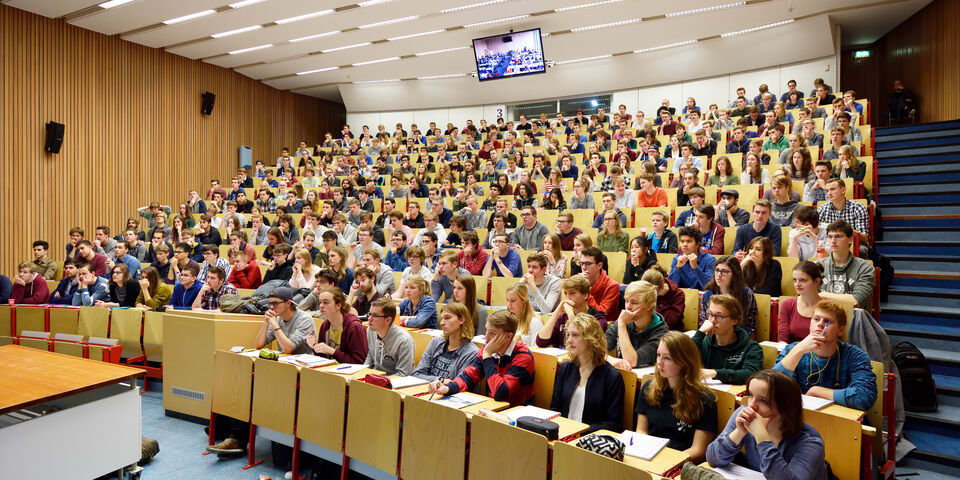Search for better counting sensors after failed pilot
The sensors intended to provide more insight into the number of students seated in lecture theaters soon proved unreliable. By way of a pilot, these sensors were installed in five lecture theaters in September. For the time being TU/e will continue to do manual counts while better - and affordable - sensors are sourced.
It was soon clear in September that the sensors that had just been installed were not up to the job. In that month five lecture theaters were hung with boxes that, working in conjunction with infrared sensors, were intended to register the room occupancy with greater accuracy. With the ultimate aim of enabling the more efficient use of TU/e’s educational rooms.
“The product was not fully developed and was extremely inaccurate,” concludes Peggie Rombout, project manager at Education and Student Affairs. The dashboard on which data was displayed had elements that did not work and the counts varied greatly, Rombout informs us. For instance, instead of the two-hundred students present, thirty were counted. It has been agreed with the supplier that TU/e need not pay and the pilot sensors were removed earlier than planned. “And that’s the end of that,” says Rombout.
Experimenting
The Timetabling steering group decided last week that counts will be done manually for the time being and that it will experiment with commercial and affordable counting sensors. “At the present time, sensors that function well are simply too expensive,” says Jim Bergmans, Timetabling program manager. “We do expect more, better and more affordable systems to become commercially available, but it is very early days for this technology. Besides, we need to gain more experience of analyzing the data that are generated.”
The steering group has provisionally given itself two years for this search, “but of course if we find a system that meets our requirements earlier, we’ll start working with it,” says Bergmans.
Avenues will also be explored within TU/e, specifically in the Crowd Flow research group at Applied Physics. Here, researchers use counting sensors for various purposes, including counting people at stations and traffic hotspots.
Furthermore, the steering group is keen to see whether counting equipment can be used more widely on the campus. Bergmans: “We are discussing the possibilities with Real Estate Management. The numbers are not only interesting for educational planning, it is also good to know how many people are using certain buildings and how Design Based Learning rooms, as well as lecture theaters, are being used.”


Discussion